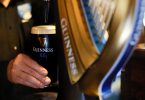One-third of pubs introduced staff pay cuts – survey
The Pub Industry Survey 2011 approached 2,000 LVA and VFI members of which 415 responded.
The majority, 89 per cent, were found to own their premises while the remainder were tenants/operators.
Some 9,082 pubs and bars operated here in 2011 according to the survey which also discovered extremely high levels of pessimism in the on-trade with 82 per cent of respondents of the belief that the prospects for this sector will worsen.
Apart from the economy, the impact of drinking at home has negatively affected pub visits as has the smoking ban and emigration noted the report.
Nearly 90 per cent of respondents indicated that the number of weekly customer visits had fallen over the year to July 2011 with one in three respondents stating that the average number of weekly customer visits had fallen by 20 per cent or more. This had been matched by a reduction in the average customer spend with 76 per cent reporting a fall in drink spend.
Half of the respondents had had valuations of their premises carried out in the past two years. 64 per cent believe that this value has fallen by more than 25 per cent.
Over half (58 per cent) of the respondents had carried out capital refurbishments to maintain trade. 17 per cent of these had spend over €100,000.
Customer spend/price
According to the report, 19 per cent had noted an increase in spend while only five per cent noted no spend change.
Of those offering food, 68 per cent indicated that there has been a decrease of five to 10 per cent in spend while 14 per cent reported no change in spending habits here. Overall, 18 per cent saw an increase in customer spend on food ranging from one per cent to 20-plus per cent.
Approximately one-third of respondents reported offering a reduction in prices charged to customers of up to 10 per cent. This was the case for draught beer for 31 per cent of respondents, for bottled beer (37 per cent) and for spirits (32 per cent). The principle factor behind the decision to reduce prices was customers ‘having less to spend’.
Just three per cent took a price rise for draught beer, four per cent in the case of bottled beer and five per cent took one for spirits. Some 72 per cent of respondents had seen no change in the cost of beer purchased for resale while 57 per cent reported no price change from spirits and bottled beer suppliers.
This meant that for 63 per cent of respondents, selling prices remained unchanged in the year to July 2011. Some 66 per cent hadn’t changed their draught beer price, 59 per cent maintained the price of their bottled beers and 63 per cent kept the same spirits prices.
Overall, half of respondents had received support from suppliers in the previous year with 12 per cent benefiting from more than one type of support including ‘product support’, ‘reduced prices’ and ‘other supports’.
Margins
Gross margins for the last three years varied with 58 per cent reporting margins of between 30 and 50 per cent with 20 per cent of respondents located in rural towns indicating margins in the 50 to 60 per cent range and six per cent achieving margins of 60 per cent and above.
By contrast, 41 per cent of city centre respondents indicated gross margins of 50 to 60 per cent while 27 per cent indicated 60 per cent or more.
“For suburban and Town respondents 19 per cent achieve a gross margin of 30-40 per cent, 36 per cent a gross margin of 40-50 per cent with the remaining 26 per cent indicating a gross margin of 50 per cent of more,” noted RSM Farrell Grant Sparks.
In light of the reduction in customer spend, 88 per cent of respondents had taken steps to maintain their sales and/or gross margins such as providing entertainment (58 per cent), promotional drinks offers (43 per cent), reducing drink prices (42 per cent), adding a smoking area (33 per cent), increased advertising (31 per cent) and ‘other’ (14 per cent).
65 per cent offered TV/sport facilities, 62 per cent offered live music, 26 per cent offered ‘games’ and 16 per cent offered ‘other’ (quiz nights, race nights, Summer barbecues and bingo).
Salaries & staffing
Salaries and wages accounted for 20 per cent of revenue in more than half of all cases, stated the report.
The survey found that rates of pay for floor staff ranged between €8.65 and €15 per hour in 97 per cent of cases.
“56 per cent of respondents employed males on a full-time basis and 66 per cent employed males part-time. Fewer females are employed full-time with 45 per cent of respondents indicating that they have full-time female employees. In contrast, 67 per cent employ females part-time.
“Of the nightclubs to reply, 100 per cent have male employees while 88 per cent have female employees. Thee is an average of 10 males to seven females per premises”.
Interestingly only nine per cent of respondents made use of a Special Exemption Order and of those, 62 per cent found that the cost of the SEO exceeded the revenue it generated.








